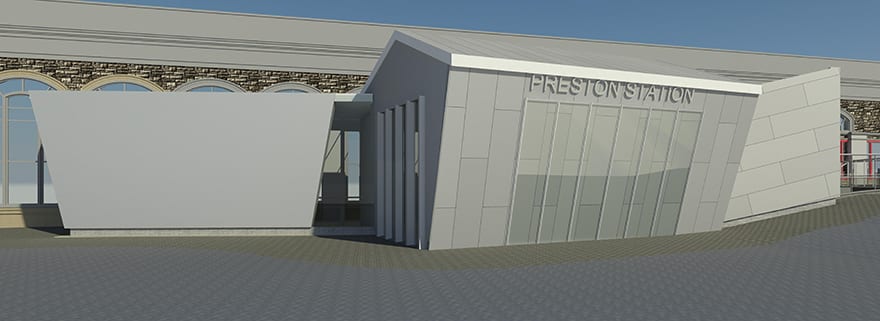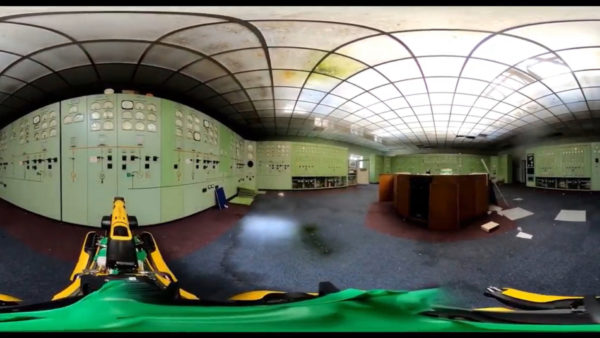Lee McDougall from architecture and building consultancy AHR says we need to talk about BIM on a different level if it is to be taken up by projects at the smaller end of the scale.
Regular visitors to this website will be vividly aware that the much-anticipated “BIM bang” has turned out to be more of a splutter.
Despite the government mandate in 2016 we have not seen anywhere near the take-up of BIM as anticipated – and nor does the government appear to be enforcing its own mandate.
As reported here, Construction Manager’s annual BIM survey revealed that “only 38% of centrally-funded government clients made BIM a requirement on all of their projects, 12 months after the mandate”.
This is baffling – not to say disheartening – to those of us who know the wide-ranging benefits that BIM can bring. There are of course many possible reasons for this seeming lack of interest, ranging from cost concerns to a simple human fear of change. But would it be too harsh to suggest that some of the fault may lie with ourselves: specifically, in the way that we “in the trade” introduce BIM to potential clients?
It is understandable that those who are most enthused about a new technology will want to pass on this enthusiasm, so that all too often BIM is still discussed in the most glamorous, large-scale terms possible – and our enthusiasm is often heavily laced with jargon.
This may seem perfectly straightforward to those in the know, but it is also potentially alienating. An obvious example is BIM Level 2. Clearly this is an achievement but if a client knows nothing about BIM, it is also meaningless. We can also sometimes misunderstand clients’ daily priorities or the scale at which they are focused.
The transport sector is a case in point. Seen from the outside this may look like a large-scale entity: we might talk about BIM’s potential use for “the bus network” for example. But this network doesn’t exist in practice – each local authority or depot owner has only to tackle its own stock, often a relatively small-scale undertaking.
Especially in a difficult economic climate, these projects also need to be undertaken within heavy budgetary constraints. No wonder clients are often disinterested in a technology that may appear, from the outside, to be an expensive and time-consuming irrelevance.

AHR used BIM at Preston rail station
Similarly, with rail, most of the time we are really talking about small-scale localised projects. While there are common themes in rail right now, for example the drive from train operating companies (TOCs) to capture lost revenue through the installation of ticket barriers, or changes to spatial layout driven by advances in ticketing (for example the need for a smaller ticket hall but more retail), at the end of the day each TOC or station owner is focused on its own often modest asset and the need to get the task done as quickly and cost-effectively as possible.
Big-scale BIM simply doesn’t feel relevant or helpful to those tasked to achieve such projects. What does a station owner need to know at the very small-scale? The very fact that BIM can be used at small-scale at all, and with existing assets, is itself still not common knowledge.
Nor is it widely recognised that BIM models can “slot into each other” to form a larger model over time.
Cost is certainly a concern but even where a model is offered at no cost to the client because it is part of the standard working process, “adoption” can still feel daunting or at the very least an unnecessary complication.
It is up to us to make our clients aware that BIM can be taken at a manageable pace and scale, and we should also be mindful of the fact that not every client will want or even need to embrace the entire BIM capability. If this spectrum could be seen as A-to-Z, an individual estate manager might only need L-to-P!
For example, BIM’s stand-out benefit is data capture, however the graphical capabilities can be a real boon in terms of getting stakeholders on board. For one client this may well be the major benefit. For another the best bit may be post-build asset management. The point is that we don’t have to sell every aspect to every client.
We should also tailor the technology to the task, not the other way round. At AHR we soon recognised the benefits of BIM for small-scale surveying and building consultancy work and our in-house team have used BIM, in conjunction with other technologies such as laser scanning and drones, for a broad array of purposes and at many scales.
These range from tracking the sun to calculate light quantities in the face of concern about Rights to Light issues caused by developments to a local bus and rail interchange, to laser scanning and building a BIM for Euston station to enable the designers to understand the unusual relationships between the ramps and the concourse.
We have used BIM to model the very complex shape of the entrance canopy at Preston bus station – which would have been impossible to comprehend in two dimensions – and also the complex topography of Rotherham rail station. The point being that in each case the use of BIM was not imposed but rather entirely driven by the very specific needs of a very specific asset.
While BIM is best known for its use at the grand scale, then, we may be unwittingly “overselling” it in ways that are irrelevant, off-putting or even intimidating. At the smaller scale, which so much of the transport “network” actually is in practice, we need to tailor how we use, and talk about, BIM and other technologies.
The tangible, down-to-earth benefits are clear but if we speak in a language that does not reflect client concerns then we can’t be surprised if those who could benefit the most are reluctant to “get on board”.
Lee McDougall is director of in-house 3D laser scanning at architecture and building consultancy AHR
Big-scale BIM simply doesn’t feel relevant or helpful to those tasked to achieve such projects. What does a station owner need to know at the very small-scale? The very fact that BIM can be used at small-scale at all, and with existing assets, is itself still not common knowledge.– Lee McDougall, AHR
Comments
Comments are closed.














I think overselling BIM is the word – and i am afraid I don’t find the image of AHR’s Preston rail station canopy at all a good advertisement for its benefits (it happens to be a station I know quite well). As a one-man-band (mostly) I have made various attempts to understand BIM, and have disliked the way it attempts to put things into predetermined packages from the beginning: I prefer to draw two lines than have the concept ‘wall’ thrust on me. In this way rigidity and pre-conceptions seem to be built into the whole set-up. I accept that my understanding of it is very limited and probably wrong, but people like me are not won over at the start, which is where it matters.
BIM is the perfect storm with regards to change: new language, new technology, new standards, fear, additional cost, not tried and tested etc etc. The reality is the Government Task Team failed to sell the vision, create some excitement and talk in a language our customers understand. It didn’t resonate with the decision makers. They also failed to create a strong mandate. Customers who do not want to change simple quote “this project is not centrally funded, therefore BIM is not required”. On a more positive note I am now working with the UK BIM Alliance to do exactly this. Watch this space.